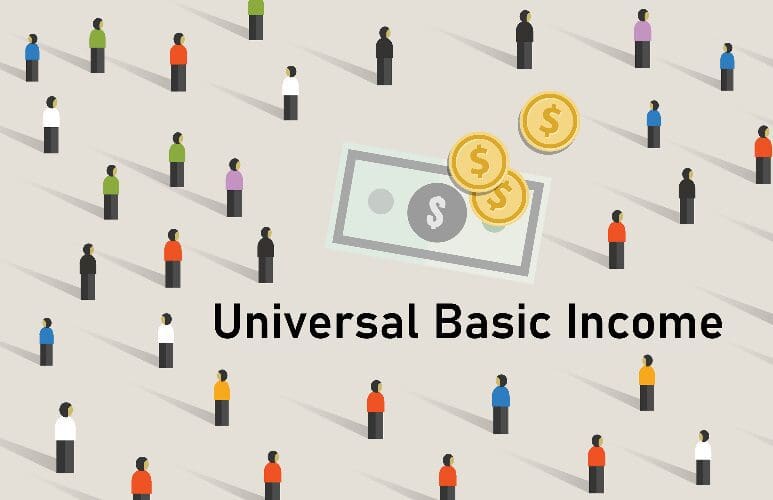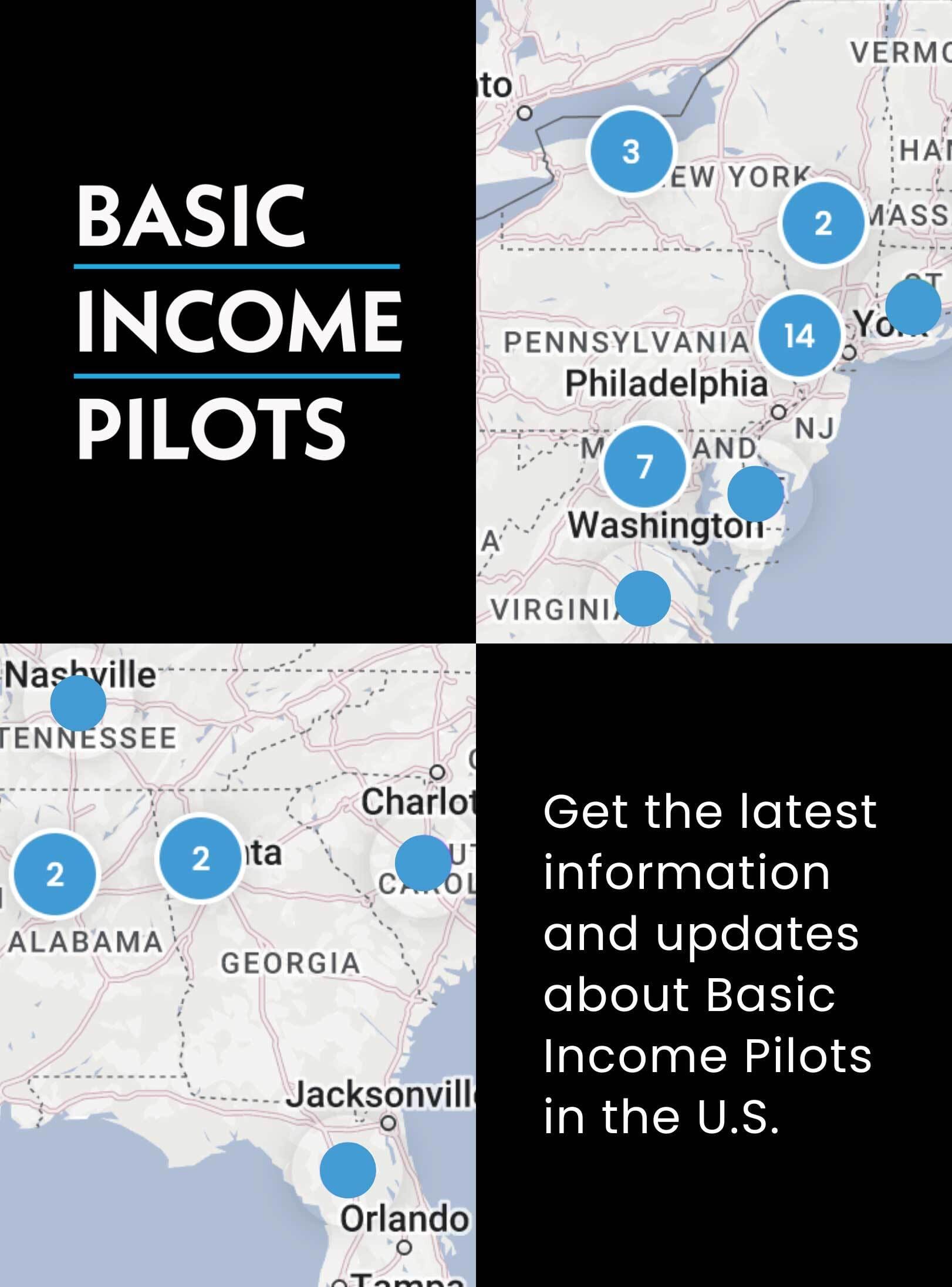Universal Basic Income Getting More Notice In Wake Of COVID-19 Crisis
by Mark Hrywna
Automation and Artificial Intelligence (AI) were always the developments that were expected to eliminate millions of jobs in the future. Instead, the novel coronavirus pandemic has led to millions of sudden job losses.
Unemployment skyrocketed after shutdowns and social distancing efforts to contain the spread of the novel coronavirus (COVID-19) this spring. The shutdowns to stem the growth of the pandemic laid bare the economic insecurity of some Americans. Most don’t have enough savings to withstand an unforeseen event or emergency. Or, like some 10 million people in the weeks after the pandemic was declared, suddenly become unemployed.
Universal Basic Income (UBI) is not a new idea, having been kicked around since the Nixon administration and even earlier. But giving cash directly to those in need seems to be more acceptable as a potential solution to poverty and other issues.
Two Democratic candidates for president had some form of basic income as part of their platforms. Andrew Yang called the $1,000 per month for individuals a “Freedom Dividend.” U.S. Sen. Cory Booker (D-N.J) also included a cash proposal as part of his presidential platform. Rep. Maxine Waters (D-Calif.) has sponsored legislation to create a form of UBI and House Speaker Nancy Pelosi (D-Calif.) recently said she was open to consider some type of guaranteed income during the COVID-19 shut down.
In the weeks after the economic shutdown began, Congress passed a stimulus package that included one-time $1,200 payments to individuals and there were some calling for the payments to continue for as long as the shutdowns do. U.S. Rep. Justin Amash (I-Mich.) called for direct payments of $1,250 and $500 per child over the three months unless lockdowns end sooner. “Congressional leaders are wasting time on slow, convoluted proposals. Americans need fast, direct relief. Start getting monthly checks to people now,” he said via Twitter in March. Amash, who switched from Republican to Independent last July, has since created an exploratory committee to run for president as a Libertarian.
Joe Huston is one of the founders of GiveDirectly, which started in 2017. The nonprofit does exactly what its name says: it gives grants — not loans — directly to people unconditionally, with no strings attached. The idea started about 10 years ago, when Huston and other founders were in graduate school, working toward their doctorates.
“We were looking at a growing body of evidence that giving cash first doesn’t cause a doomsday scenario; people don’t spend it on alcohol and tobacco, they don’t stop working,” Huston said. It depends on the person but usually the money is put toward top priorities, he added, with different types of positive outcomes.
GiveDirectly, which reported $59 million in revenue on its most recent tax form, has delivered cash across countries in Africa and is setting up in Morocco. It also has responded after hurricanes in Texas, Puerto Rico and the Bahamas. Some $10 million was distributed via debit cards of $1,500 each that people could spend on whatever they needed.
In response to the COVID-19 pandemic, GiveDirectly distributed $1.2 million to people in the U.S., focusing on states that had the most severe economic shutdowns and projected unemployment. About 1,200 families were reached with $1,000 one-time grants, according to Huston.
Technology has allowed cash transfers to become more efficient and secure. To date, GiveDirectly has been working with Propel, a food stamp program that makes an app, allowing access to a group of people verified to be on food assistance prior to COVID. GiveDirectly is able to reach out by geography, targeting places especially hard hit to date by the economic shutdown.
“The big part of the nonprofit sector’s value is looking at what government support exists and fill in the gaps around it,” Huston said. A full blown UBI still seems pretty politically far. It’s hard to get a majority of Democrats to vote on a full UBI. “Even if they don’t get a full-blown UBI, the idea of big cash support systems is feeling closer if that makes sense,” he said.
GiveDirectly studies the impact of its programs, finding that every $1 transferred generates an increase of $2.60 in spending and income in the economy. At the individual level, Huston said they’ve seen improvements in earnings, consumption, psychological measures like stress and nutrition measures.
“People see it as an elegant, simple solution to poverty,” Huston said. “Different people at different times, look at it, and we put a political frame at the time, whether it actually can happen.” Almost every government in the world has some form of cash transfer, he said, pointing to Social Security in the United States and Alaska’s Permanent Dividend Fund. “Money should be a big part of how we help each other is pretty widely accepted. The debates are about who should get it, how much, and in what form,” Huston said.
Lest one think that UBI is some far out concept used in developing or Third World countries, foundations and nonprofits are involved in short-term basic income experiments in Stockton, Calif., and Jackson, Miss. The U.S. experimented with negative income taxes in the 1970s and Canada also had piloted programs.
Scott Santens has been writing and researching UBI since 2013 as editor of the website, Basic Income Today. He has crowdfunded his own basic income since 2016 via Patreon, a crowdfunding platform similar to Kickstarter or Indiegogo. He also serves on the board of the Gerald Huff Fund for Humanity. “It’s really interesting to think about these effects and how things would rebalance,” Santens said. “There are nonprofits that would be hugely helped by it, some effectively would find their businesses model no longer viable,” he said.
“Automation has been going on for decades — and will continue — they happen in slow motion. This [COVID-19] happened right in front of our faces. It doesn’t make sense to have 20 million people file into the unemployment system in three weeks,” Santens said.
People who’ve never experienced the system before have now experienced it, he said. “There’s massive demand for food banks, people who’d never needed them before are suddenly in that position. They have no choice in what they’re getting, they’re told they just need to be thankful. At the same time, there’s no scarcity of food in stores, there’s scarcity of money that enables them to buy food,” Santens said.
Much depends on how any UBI would be structured. In Canada, food banks have endorsed a basic income, Santens said. They believe people should not rely on food banks for their food security. “It’s insane to see the burden put on the food bank system when it’s not prepared to do that,” he said.
A 2017 study by the Roosevelt Institute found that adopting an annual $12,000 basic income for every U.S. adult citizen would permanently grow the economy by 12.56 to 13.1 percent, or about $2.5 trillion by 2025, and increase the labor force by 4.5 to 4.7 million people. But how a UBI might impact philanthropy and social services is less clear.
Where nonprofits fit in the picture with a UBI, both on the service and programs side, is a bit of an open question. To say nothing of how philanthropists and donors would react to UBI.
“People having a lot more money to give is going to lead to more people giving money, then the question will be, what are the charities that are able to attract those small dollar donors,”Santens said. “I think people would be more open to providing charities to give directly. They’d see that it really does work well,” he said.
An organization devoted to housing homeless, instead of being focused only on a housing solution, could recognize that if people had money, they could pay for rent and make that choice on their own, Santens said. “There will always be people who need more assistance than just cash. Once you clear out the people who only need cash, it’s much easier to find those people, and help them, using tools of your nonprofits,” he said.
Santens likes to use an analogy to illustrate the concept of UBI: There are a group of people in a room that’s filling up with water. You don’t know who can swim and who can’t. If you can get life vests to everyone, those who don’t need it, they’re fine but some people need a lot more than that. It’s easier to see them. You can’t see them right now.
Past experiments with UBI have shown that people didn’t work less necessarily but spent more time between jobs looking for the next job, Santens said. The biggest decrease in work was among women who had just had children, effectively making the UBI experiment a sort of paid maternity leave.
“Our economy is just not going to need as many people,” said Trista Harris, president of FutureGood, a consultancy “focused on helping visionary leaders build a better future” and former president of the Minnesota Council on Foundations (MCF).
She hopes that any UBI program would cut into what service charities are offering, in which case those nonprofits could “move farther up the pipeline.” Instead of focusing on survival human services like food and shelter, the hope is that basic needs would be covered and instead those organizations could tackle more things like educational attainment and job training. “I hope it would give nonprofits more time and space to think about root causes of issues rather than kind of putting out fires as they show up,” Harris said.
What impact UBI could have on the nonprofit sector and philanthropy will depend on how big it is and what services it replaces, according to Miranda Perry Fleischer. She’s a professor of law and co-director of graduate tax programs at the University of San Diego School of Law, studies UBI and charitable giving policy.
“There are a couple moving parts of that,” she said. “The bigger the UBI is, I can see perhaps some people starting to think, well everyone’s already getting $x per month from the government, why donate to a soup kitchen?”
If a UBI is big enough, it will be funded in part by cutting welfare services like the Earned Income Tax Credit (EITC) and SNAP and raising taxes. When taxes are raised, you never know if a drop in income causes people to feel more pinched and maybe give less to charity, or raise taxes on itemizers and lowers the cost of giving to charities. “It cuts either way,” she said.
Any UBI in the U.S. would have a very small floor and there wouldn’t be a mass exodus from the workforce. “Most studies show that most people don’t exit the workforce,” she said, adding that numbers that seem to surface more frequently are about $1,000 per month for an adult. Still, there’s always going to need goods and services that nonprofits provide.
“I think there’s still going to be plenty of need for other types of social services,” Fleischer said, viewing UBI as more of a complement to what nonprofits do rather than a replacement. In some ways, UBI could help the nonprofit sector, free up for people who aren’t working or have a “tenuous relationship with the workforce,” maybe even doing more volunteer work.
Much depends on how any UBI program would be designed, Fleischer said. Most concepts do away with food assistance programs like SNAP or WIC and housing assistance like Section 8, and TANF, to fund a UBI. “It’s all how you design the program and the tradeoffs you want to make,” Fleischer said.
Most proponents of UBI tend to think in the big picture and what it would look like on a national scale but there’s no reason why a city or state couldn’t do it, Fleischer said. “For most advocates of a UBI, I would guess the end game would be a federal program,” she said.
In early March, Philadelphia City Council’s Special Committee on Poverty Reduction and Prevention unveiled a Poverty Action Plan that includes a basic income. The 14-page action plan aims to lower the city’s poverty rate of almost 25 percent through the use of, among other things, direct cash transfers to help families transition from poverty, including people aging out of government systems, such as foster care and prison.
In California, Santa Clara County has been exploring a basic income program specifically for foster youth, of about $1,000 per month for a year or two. The City of Stockton, Calif., implemented a trial basic income in early 2019, delivering monthly payments of $500 to 125 residents who live at or below the median annual income of $46,000. Initial results have shown that most people use their stipends to buy groceries and pay bills.
“As a country, we very much tie aid to this notion of deservedness and work,” Fleischer said, sharpened by recent efforts of the administration to stiffen work requirements for things like SNAP. “A really big hurdle that a lot of people need to get over: Sometimes it’s OK to give people without a requirement of some sort of showing of deservedness,” she said.
“This is an idea whose time has come, big time,” Gisele Huff, president and secretary of the board of The Gerald Huff Fund for Humanity. She credits her late son, Gerald, who died of pancreatic cancer in 2018 at the age of 54, for converting her from a lifelong libertarian to a proponent of UBI after the Great Recession in 2008. “Essentially it’s a re-examination of what an economy is, what a job is, all the things we’ve been conditioned to accept since the Industrial Revolution. That only happened after the Industrial Revolution. Before that, everyone had a place in society, everyone stayed there and that was it. There was no place where you got a paycheck.”
UBI is “a way of circulating money so that people can spend money,” Huff said. “That’s what our economic system is: Put money in people’s hands, so they can make choices, to dictate to the market what needs to be produced. We think of money as a thing unto itself; it’s not.”




















